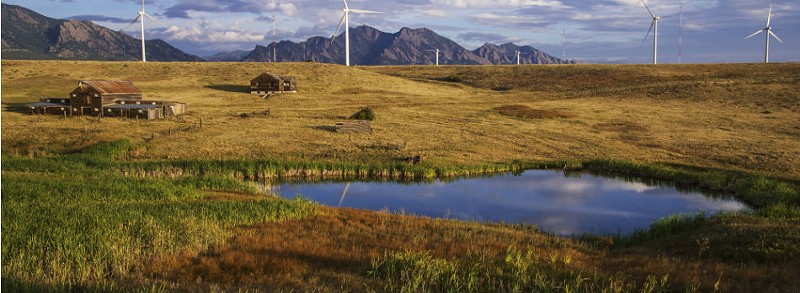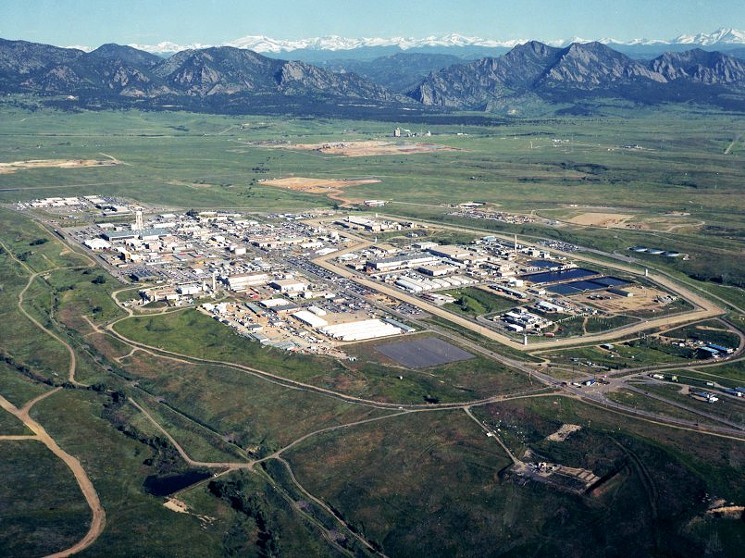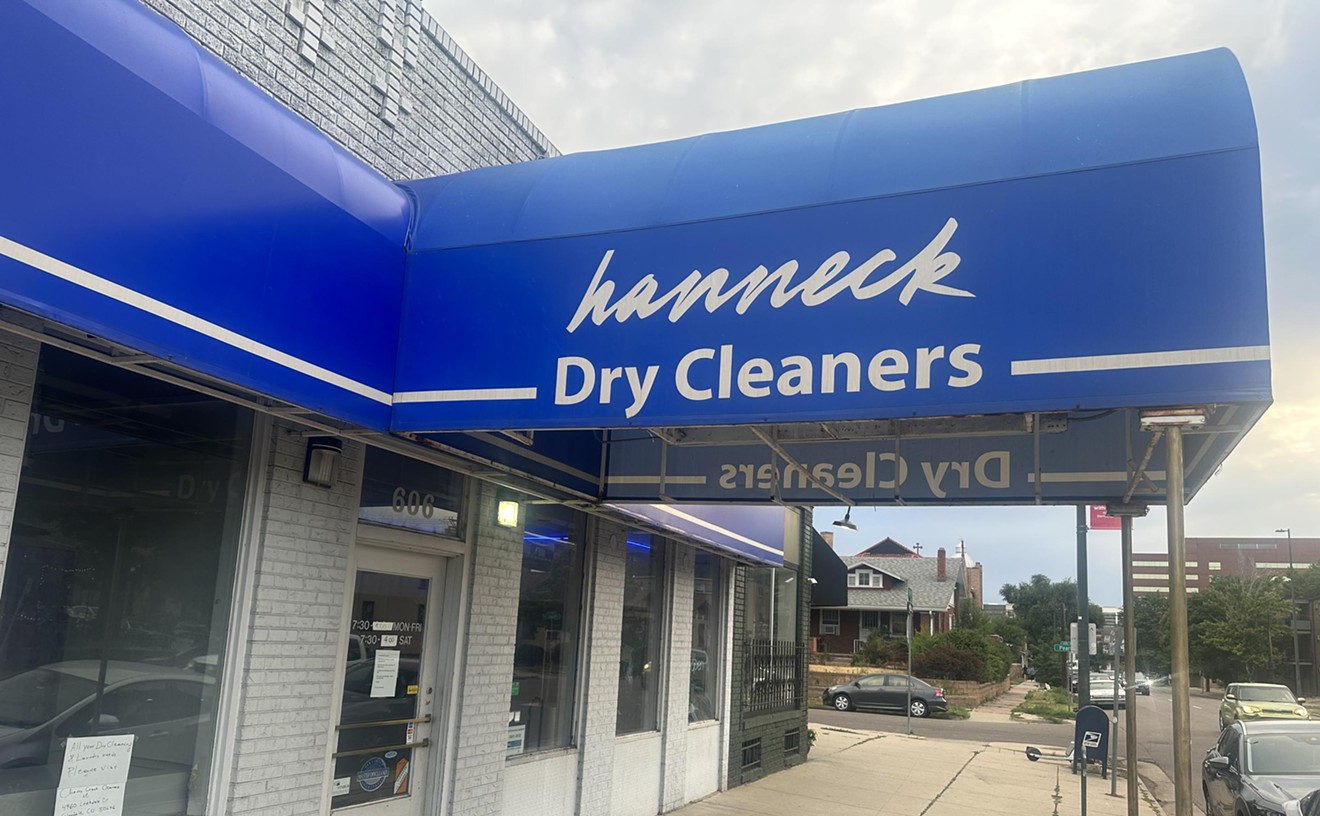On October 18, just weeks before Coloradans would decide the fate of Proposition 112, which called for a setback of at least 2,500 feet between homes, schools and other properties considered “vulnerable” and any drilling operations on private land, a company out of the United Kingdom filed an application with the Colorado Oil and Gas Conservation Commission to drill over thirty wells on a 2,560-acre site just outside the Rocky Flats National Wildlife Refuge. That U.S. Fish and Wildlife facility encompasses about 5,000 acres of the former Rocky Flats Nuclear Weapons Plant, which for almost forty years manufactured all the plutonium triggers for the nation’s nuclear weapons arsenal. But the refuge doesn’t include all of the former plant: At the center of the site is the Central Operable Unit, a 1,308-acre area that was so contaminated, it remains under the control of the Department of Energy, and eternally off limits. On the surface, at least.
Fracking under a former plutonium factory? It sounded like an Onion gag, but this Denver Post story sent out by the AP was all too true.
And Rocky Flats has made plenty of spectacular headlines in the past.
“Good News Today,” the Rocky Mountain News trumpeted on March 23, 1951, when it announced that a site sixteen miles northwest of Denver — upwind of the biggest city in the Rocky Mountain West — had been chosen by the Atomic Energy Commission for a $45 million facility. Not much else was revealed about the project, but jobs were jobs, and these paid well. It wasn’t until June 1957 that the Denver Post revealed that handling plutonium was a routine part of the job, a detail shared by the plant after two employees were injured in an explosion there.
By 1988, Rocky Flats was regularly exploding in the headlines. While the plant was as secretive as ever, its opponents were not. That spring, the Rocky Flats Truth Force held regular protests outside the facility. And forty years ago this week, Daniel Ellsberg — yes, the Daniel Ellsberg of Pentagon Papers fame — went on trial in Jefferson County, along with nine other members of the group who’d been accused of trespassing and obstruction outside the plant seven months earlier. Using Colorado’s choice-of-evils statute, the defendants decided to put Rocky Flats itself on trial, arguing that it was a public health hazard to nearby residents and also threatened world security by increasing nuclear stockpiles. But on November 20, 1988, Judge Kim Goldberger ruled that the defendants could not use the choice-of-evils defense. While the dangers at Rocky Flats were “real and continuing,” the judge said, “the courts may not be used as political or legislative forums.”
After an eleven-day trial, “10 Nuclear Plant Protesters Found Guilty in Train Blocking,” the Washington Post reported on November 30, 1978.
Thirty years ago next June, Rocky Flats again made front pages across the country after seventy FBI agents raided the facility, in the first-ever raid of one federal agency by another. The investigators were looking for evidence of environmental crimes at the plant, and the evidence seized starting on June 6, 1989, was subsequently presented to Colorado’s first-ever special grand jury, whose members ultimately decided that they wanted to indict eight individuals, from both the DOE and Rockwell, and charge them with criminal violations. Instead, the Department of Justice sent the grand jurors home, and in March 1992 signed a deal with Rockwell, indemnifying its employees from future charges and fining the corporation $18 million, less than it had made in bonuses in one year of plant operations.
After the raid, Rocky Flats never made another trigger; it was shut down entirely in 1992, and the country’s biggest Superfund site was slated for cleanup. After nearly ten years and $7 billion, the job was declared complete. Some of the plant’s most contaminated rubble was buried seventy feet below the ground in the Central Operable Unit; the land in the Peripheral Operable Unit was turned over to Fish and Wildlife to revamp as a wildlife refuge, much like the Rocky Mountain Arsenal two decades earlier.
Once again, opponents attempted to use the courts “as political or legislative forums,” and demanded that the refuge not be allowed to open; two cases are still pending. And as the opening date of the Rocky Mountain Wildlife Refuge approached this fall, Congressman Jared Polis made a last-second request to Ryan Zinke, secretary of the Department of the Interior, which oversees Fish and Wildlife, to consider “my constituents’ request that the DOI complete further testing of air, water, and soil at the Refuge site by March 2019, and that until further testing has been completed, the Refuge site remain unopen to the public.” Despite Polis’s entreaty, the Rocky Flats National Wildlife Refuge opened to the public on September 15.
It was open to the public; was it also open for business?

The entrance to the Woman Creek Loop trail at the Rocky Flats National Wildlife Refuge.
Courtesy the law Offices of Randall Weiner
It might have been the first conscious step that Highlands had taken. Applying to drill outside of a former plutonium-processing plant? “Why did they not do due diligence?” asks David Abelson, executive director of the Rocky Flats Stewardship Council. “I couldn’t figure it out.” If the company had done any research, he notes, it would have learned that drilling is prohibited at Rocky Flats unless it’s in accordance with a soil-disturbance plan — “and that presumes the DOE or the state would even want to move for a waiver and approve a soil-disturbance plan.” It’s extremely unlikely that either would make such a move, he adds, considering that when the drilling prohibition was adopted in 2006 (it was amended in 2011), there was no such thing as horizontal drilling, “no consideration as to what happens if you drill off site, go down 1,000 feet and then go at an angle,” as fracking does.
Neighbors and activists who’d protested Highlands’ numerous applications had another meeting set for the afternoon of November 15; it became a celebration rather than a planning session after they heard that Highlands had pulled the application. “We were elated, after losing the fight to keep the refuge closed,” says Alesya Casse, a co-founder of Candelas Glows, a group that takes its name from a development that backs up to Rocky Flats. “People woke up to the sleeping giant in their back yard. They don’t really know how bad it was.”
The protesters had another reason to celebrate, too. That same day, community organizations across Colorado, as well as several prominent elected officials, had sent a letter to DOE and Fish and Wildlife officials, again asking that the refuge be closed to the public, citing residual contamination from decades of plutonium-trigger production at the site. The letter was initiated by the Rocky Mountain Peace and Justice Center, whose members started watchdogging Rocky Flats back when Ellsberg was protesting on the tracks. But this time it was joined by new allies, including incoming Colorado House Speaker KC Becker.
Although Becker says she has no plans to make Rocky Flats an issue in the legislature — “I’ve got my hands full with a whole bunch of things,” she points out — it’s been tried before. Wes McKinley, who’d served as the foreman of the Rocky Flats grand jury, ran for U.S. representative in hopes of avoiding the gag order that controls grand jurors and telling the true story of Rocky Flats in the safety of Congress. When that effort failed, he ran for the Colorado Statehouse, where as a representative he introduced numerous bills regarding Rocky Flats: first to keep it closed, then to make sure pointed signage was set up outside the future refuge. “They killed every damn one of them,” McKinley recalls.
But now the Democrats are in control of both the House and the Senate, and Polis, who has yet to receive a response from Zinke to his September 13 letter, is the governor-elect.
Expect more headlines about Rocky Flats.
Editor's note: On Monday, November 19, David Abelson sent an email to stakeholders to confirm that "the Board of Directors of the Rocky Flats Stewardship Council will not hold a special meeting on November 28th to discuss proposed oil and gas development under Rocky Flats. With Highlands’ decision last week to withdraw its permit applications, there is no need for the Board to gather at this time to discuss the suite of issues. Please disregard any social media postings, none of which originated from the Stewardship Council, that say the meeting will happen."














